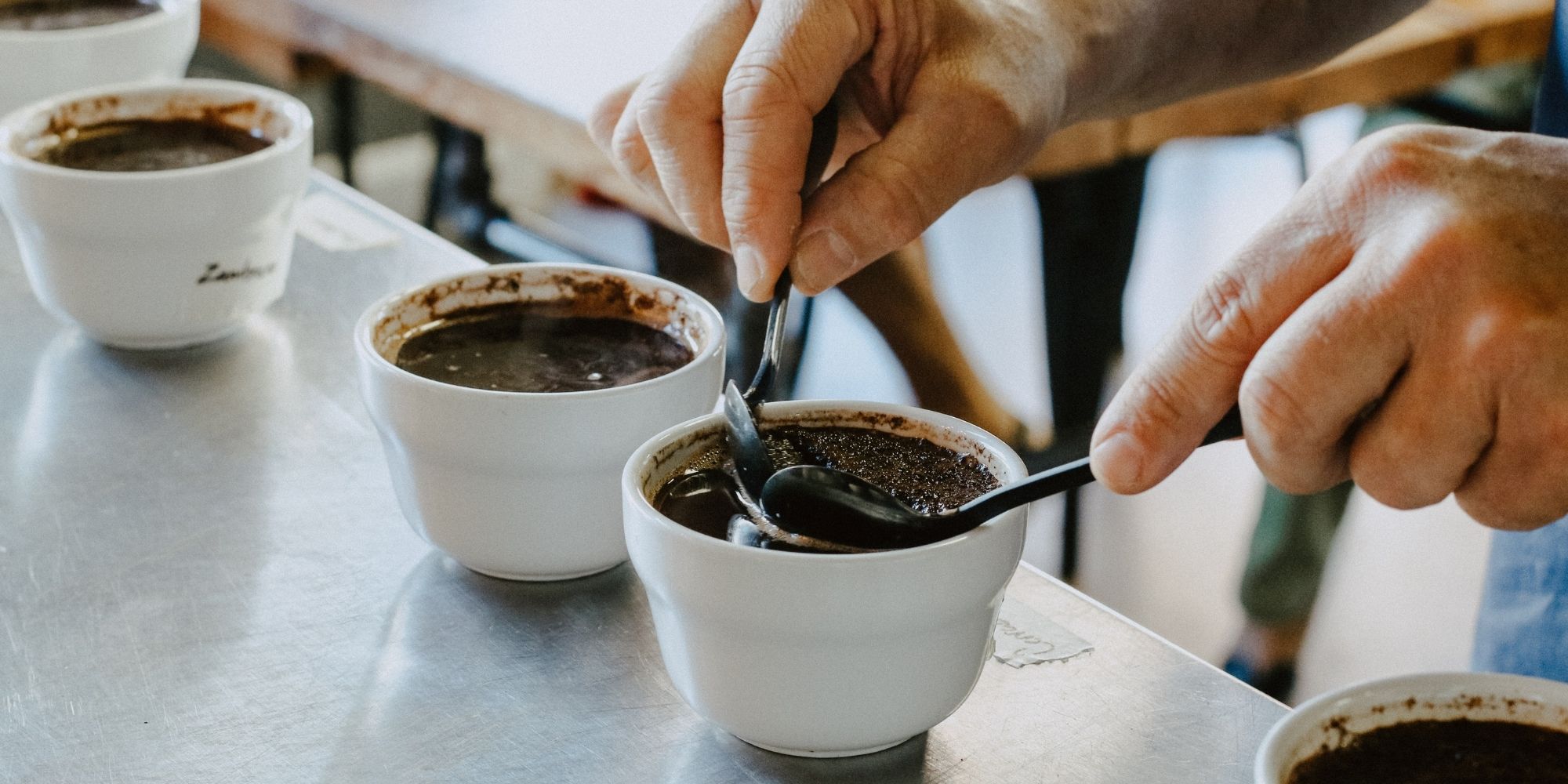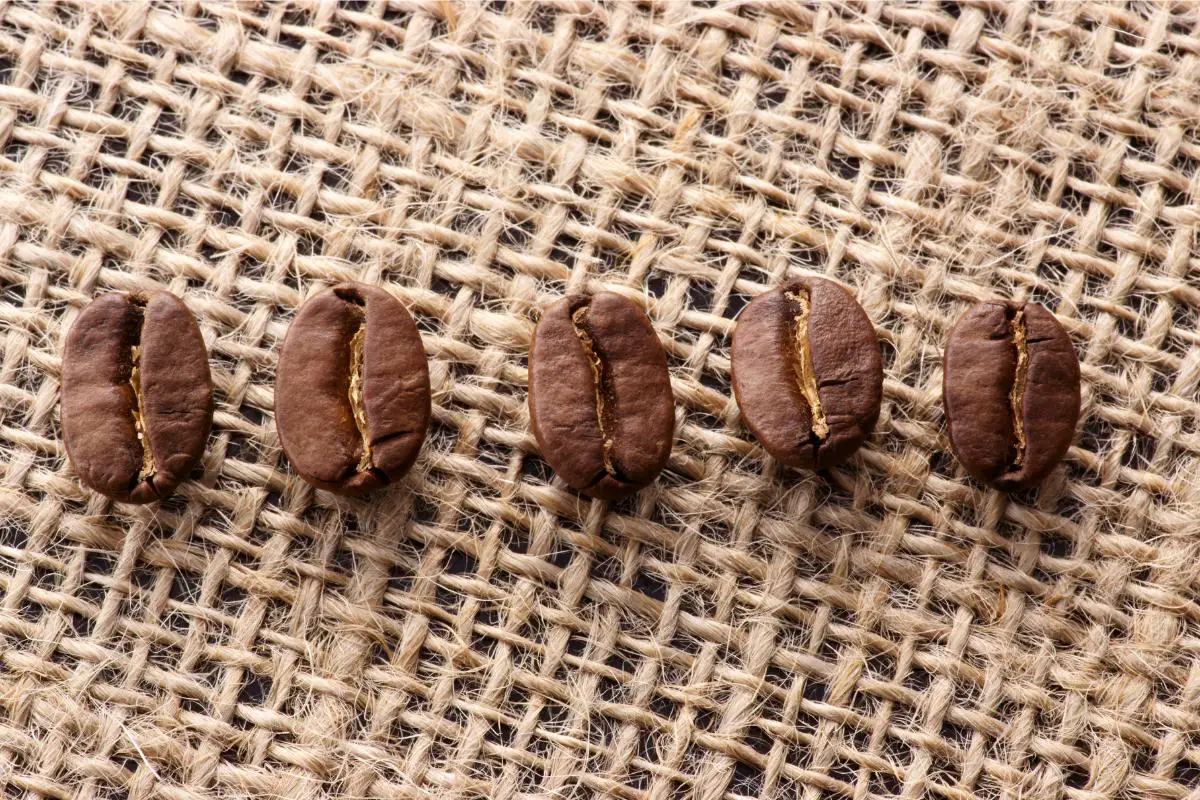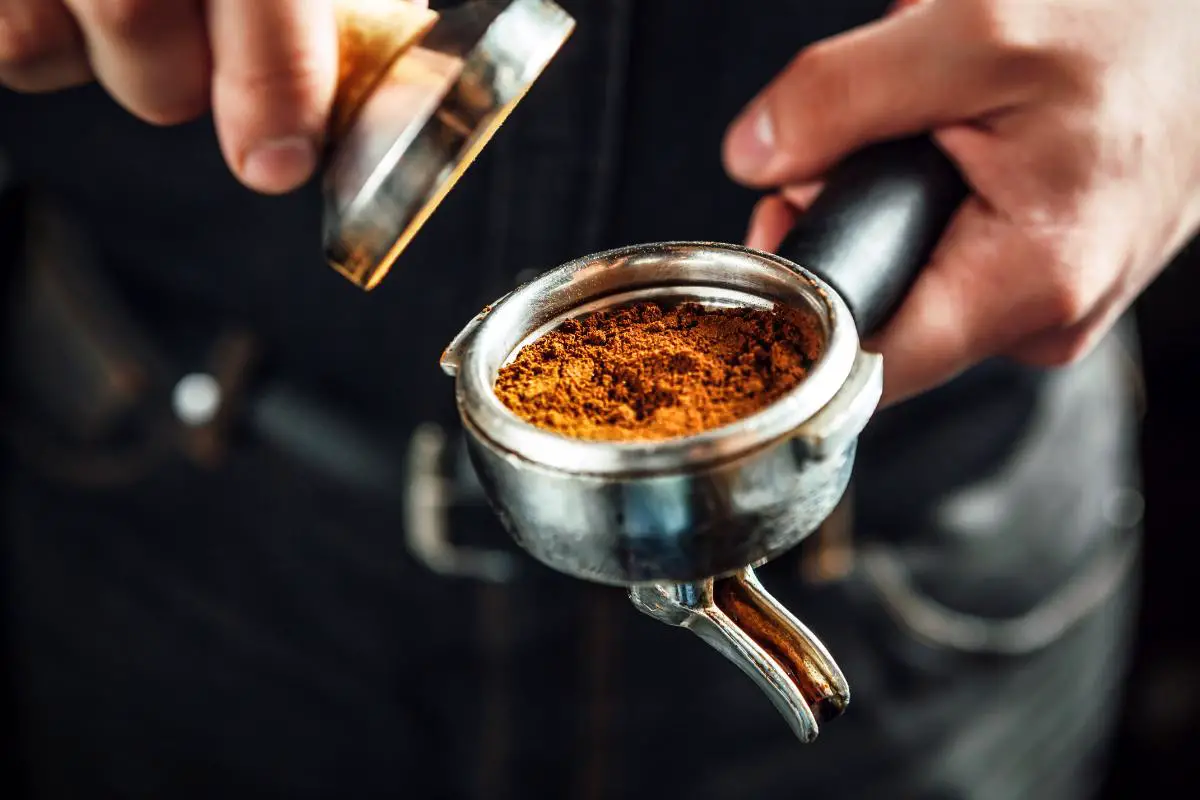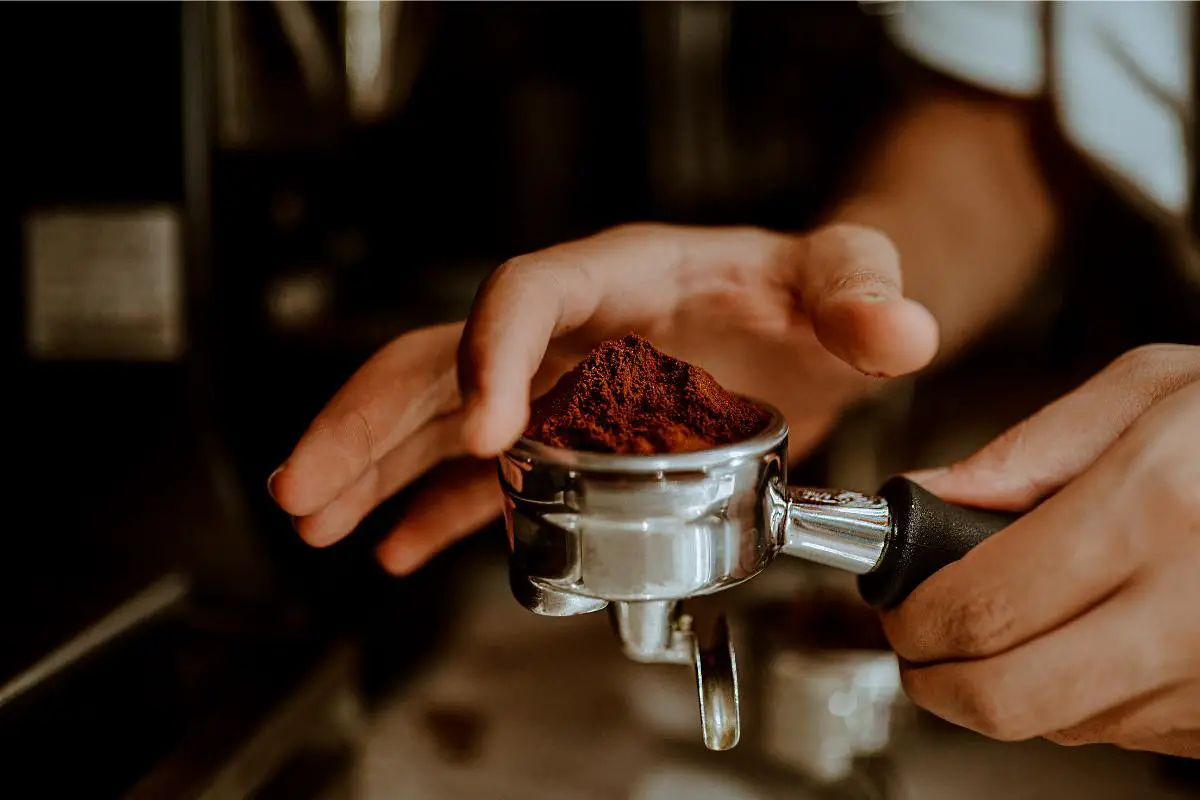Coffee cupping is a tasting and appreciation technique used by producers and buyers of coffee to test the quality of their batch.
There are different aspects to consider when judging, or cupping, coffee, akin to wine tasting.
I’ve seen and read about coffee cupping plenty of times. We all enjoy a good cup of coffee, and coffee cupping is a great way to heighten your appreciation of the morning cup.
Understanding the nuances of coffee cupping yields a tremendous amount of knowledge after rounds of grading.
In this article, I will explain all the basics and details of coffee cupping and some ways to do cupping at your own home.
It is a relaxing and social activity that coffee lovers can utilise at any time of the year.
Table of Contents
Coffee Cupping Basics
When you can appreciate the tastes and aromas of freshly brewed coffee, it heightens the experience of drinking your favourite cup.
Coffee cupping is a set process for properly tasting coffee, and the goal is to maximise the amount of aroma and flavour in each taste to judge the fine details of each coffee.
Casual or professional coffee cuppers first sniff the coffee before slurping it from a spoon. This spreads it across all the taste buds on the tongue and aerates the flavours.
They carefully note aspects including body or mouthfeel, sweetness, acidity, flavour, and aftertaste.

These can all be broken down further into categories that can be easily understood. By comparing several different brews at once, coffee cupping highlights subtleties of single-origin blends.
It is a simple art that can be mastered by anyone with a love for coffee and a little patience, resulting in a new appreciation of all the aromas associated with different brews, roasts, and coffee origins.
Ultimately this will the enable you to collect some of your favourite beans and experiment with brewing and roasting.
Whether you are experienced or new to coffee cupping, it provides a lot of coffee lovers with some insight into the plant and origins of the bean, and also broadens their horizons to try and find their ideal brew.
What is the History of Coffee Cupping?
Attempting to determine the origins of a brew is also an aspect of cupping.
There are specific flavours from different regions with contributing factors like soil content and minerals, and this is the same when it comes to the history of coffee cupping.
Coffee Cupping is a practice as old as brewed coffee but it became a tradition in the United States in the late 19th century.
It has grown in popularity over the past century and is now an industry practice for coffee experts.
Of course, this technique shares practices that are similar to wine tasting, and there is a lot to consider when coffee cupping at home.
In this article, we have decided to keep it basic and informative for anyone who wants to expand their passion for coffee drinking.
Should You Use Spoons or Cups for Coffee Cupping?
There is no wrong way to try coffee, but there is a specific set of ways people like to taste their coffee.
These coffee cupping steps might seem excessive, but that is the process for maximising the sensory experience of each taste.
You can slurp the coffee straight from the cup, aerating it as you would wine. This is the simplest way, and you can still taste all the different aspects of your brew.
Or, you can pour the brew from one cup to another and then use a large spoon to slurp your coffee. This adds an extra layer of aeration, and it is how professional coffee tasters determine flavour and aroma notes, as well as the preferred combination.
How to Try Coffee Cupping at Home?
Coffee cupping is something everyone can try at home.
It doesn’t take long and it’s a great way to appreciate different types of coffee, especially as part of the group.
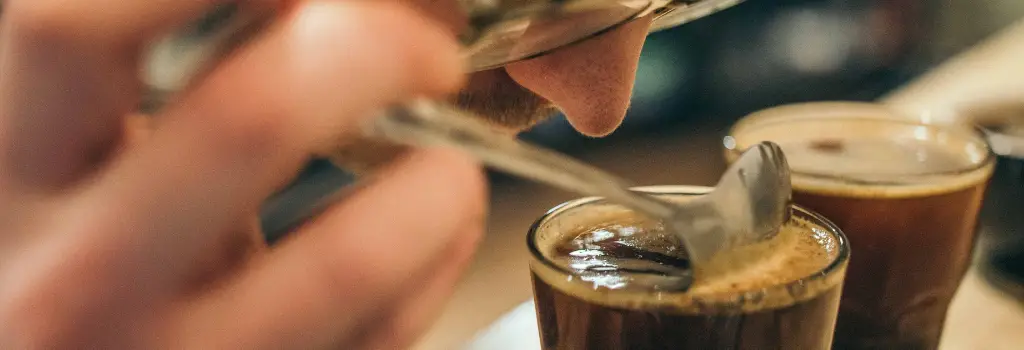
I will go through the way you can have a coffee cupping experience without any new equipment.
What You’ll Need
- Five different types of coffee beans
- Ten different bowls – two for each coffee (preferably small soup bowls…or coffee cupping bowls)
- Soup spoons (the key is to have wide spoons)
- Notebook and pen for recording
- Water for palate cleansing between tastes
How to Brew
Coffee cupping traditionally brews coffee in a French press style (or more specifically, the James Hoffman French press method).
Here are the main steps:
- Grind 20 grams of each coffee with a coarse grind (similar to sea salt).
- Pour 10 grams of each coffee into individual bowls (use two bowls per bean to avoid defects).
- Pour 150 grams of hot water into each bowl.
- Let it brew for four minutes.
- Use the spoons to break the crust, so the coffee grounds fall to the bottom. Be gentle with this process, as we don’t want to stir up coffee fines into the cupping.
- Remove any remaining coffee grounds from the surface of the cup.
- Begin the cupping process 🙂
Get your notebook and pen ready.
I recommend setting up a table with columns for each type of coffee (including the first and second bowl to compare if anything is different) along with two rows for aroma and taste.
Be consistent as possible in the descriptions.
You will want to go straight through the ten coffees and take a sip of water between them to make sure you are not mixing flavours.
How To Note Coffee Aroma?
First, take a few seconds to notice the aroma of each cup.
Many different scents come along with coffee cupping, and they help to determine the origins of the beans.
For example, the coffee may have an animal aroma, like musk, leather, or fur in dry processed brands.
Aromas such as smoky, chocolate, caramel, floral, earthy, citrusy, nutty, spicy, and woody are just some of the flavours present when sniffing coffee brews.

Each one of these notes combined gives the taster telltale signs of its origins.
Attempting to determine the origins of a brew is also an aspect of cupping.
There are specific flavours from different regions with contributing factors like soil content and minerals. It is the same when it comes to the roots of coffee cupping.
How To Note Brewed Coffee Taste?
As you taste, take a big spoonful and slurp the coffee to maximize aeration.
Take full-sized sips to make sure you get enough coffee to saturate all your taste buds.
The first factor to consider is mouthfeel or body, such as oiliness or a more creamy texture.
Ask yourself, is it smooth or foamy, perhaps even gritty? These are the questions important when determining the body.
Sweetness is a basic word used to describe the sucrose or fructose content, associated with sweet aromas. It is used for those coffees free from off-flavours like you would taste in treated drinking water.
Acidity is tricky as it can be a sharp or tangy taste like with zesty fruits.
Bitterness is the sharpness of the taste with an earthy flavour. Both acidity and bitterness are characteristics of the brewing process. I recommend Barista Hustle’s coffee compass as a guide here.
This leads to the exact flavour of the coffee.
What other food does it really taste like? Of course, the possibilities are endless and the coffee industry has come a long way in standardising flavour notes, including the Specialty Coffee Association (SCA) flavour wheel.
How Coffee Cupping Can Help You At Work?
Coffee cupping is a great activity to do with a group and has been a growing trend in networking.
For those who prefer a good cup of coffee, you can set up a small party to break the ice with co-workers and introduce them to an office favourite or a personal find.
We like to make five or six different brews and set out some recyclable cups for everyone’s pleasure when we do holiday and anniversary parties. It is a thoughtful way to keep the office buzzing on long days.
It can also bring together potential business associates who prefer daytime meetings and social functions that don’t involve alcohol.
Charming your boss’s friends or your own, you can appreciate and use coffee cupping in your professional life.
It is a simple art that can be mastered by anyone with a love for coffee and a little patience.
You will appreciate all the aromas associated with different brews, roasts, and coffee origins.
You can collect some of your favourite beans and experiment with brewing and roasting.
Whether you are experienced or new to coffee cupping, it provides a lot of coffee lovers with some insight into the plant and origins of the bean.
It also broadens their horizons to try and find their ideal brew.
Coffee Cupping F.A.Q’s

Coffee cupping is the standardised process used to assess coffee all over the world.
From the farm to your mug, coffees will be sampled and tasted over and over again to ensure quality in the final cup.
By slurping, you spray the coffee across your entire palate. This allows the subtle flavours and aromas to reach all the tasting zones of your tongue.
80-90. Coffee that scores closer to 80 points is really good but can contain many more faults than the sample that enters the 90+ scores.
Weigh out the coffee beans. Do this at a ratio of 8.25 grams per 150ml of water. So if your cups hold 200ml use 11 grams of coffee.
Conclusion: What is coffee cupping?
We hope you have discovered how simple it is to enjoy coffee cupping and can guarantee that you won’t be disappointed in this adventure of the senses.
There is nothing more satisfying on quiet mornings, thoughtful afternoons, and snowy evenings than your perfect brew.
If you enjoyed this article, read more like this by checking out our Specialty Coffee Beginners Guides.
About the Author
Marko Lazarevic is the founder of Craft Coffee Spot. He has been drinking craft coffee since stumbling upon a Kalita Wave during his first job. Since then, he has been trying new single-origin blends and different ways to brew coffee, and sharing the learnings through his blog. His favorite brewing device is a French press.

